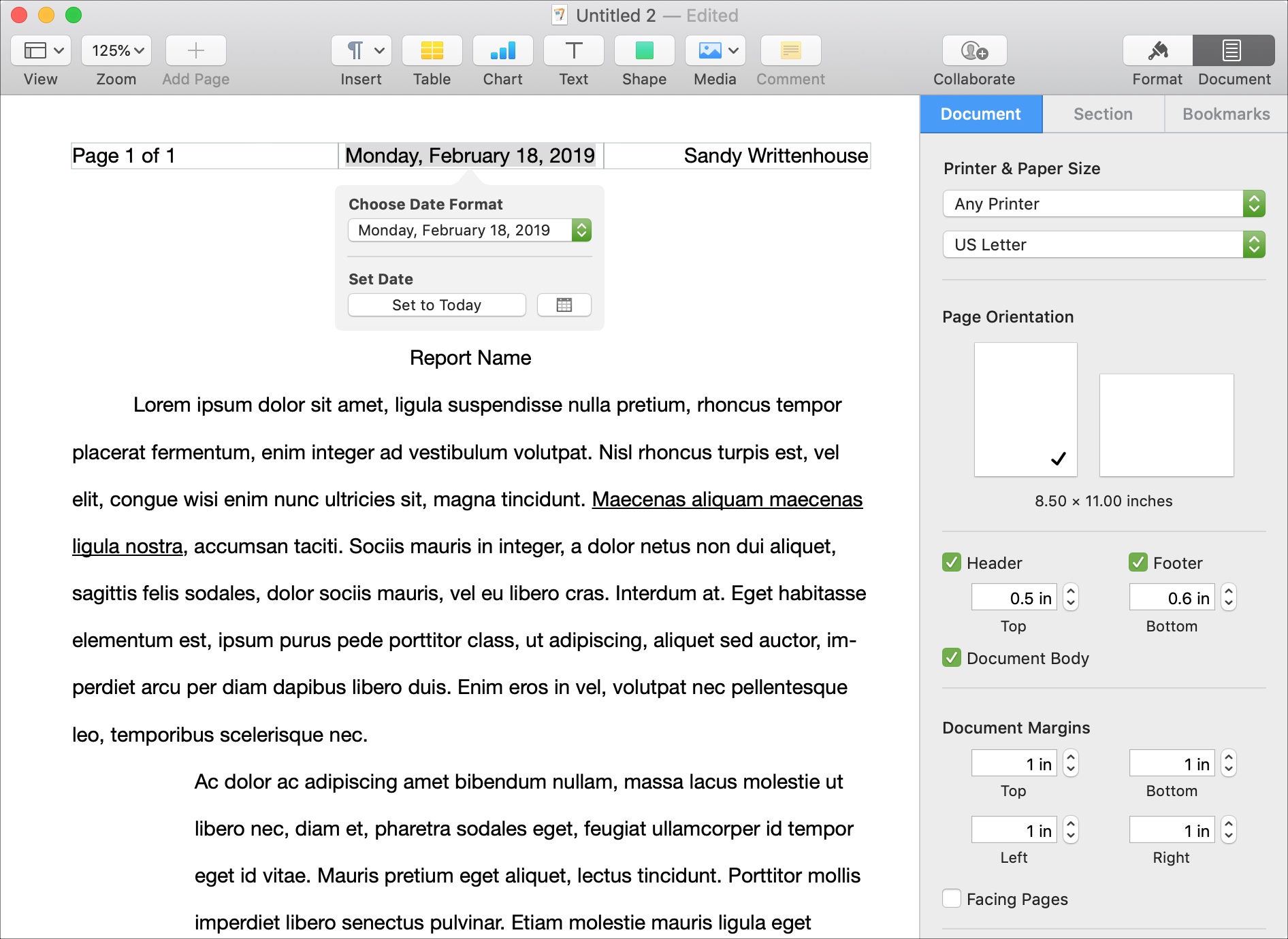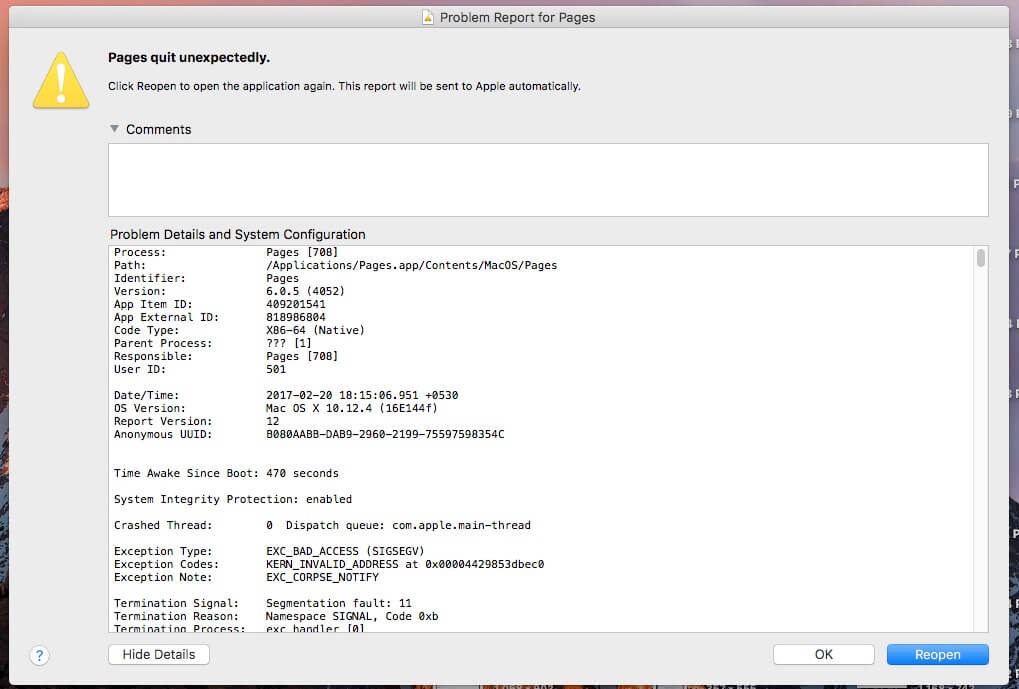Troubleshooting: Answers to some common OS X questions. Click the f.lux Mac download link. Click the zip file to expand it; Double click the 'Flux' application in your Finder window. Enter your location and wake time; Uninstalling. Go to the f.lux Settings panel (to the left of. Add links to other internal or external pages; Easily switch between HTML and WYSIWYG content viewers; Here are the best WYSIWYG web editors for macOS and Mac OS X. We think the current best free macOS/Mac OS X WYSIWYG HTML Editor is SeaMonkey, part of the lovely free and open source Mozilla Project. MacOS Big Sur elevates the most advanced desktop operating system in the world to a new level of power and beauty. Experience Mac to the fullest with a refined new design. Enjoy the biggest Safari update ever. Discover new features for Maps and Messages. And get even more transparency around your privacy.
- Pages For Mac Os X 10.11.6
- Download Pages For Mac Os X 10.6.8
- Pages For Mac Os X 10.8.5
- Pages For Mac Os High Sierra
Nmap has supported Mac OS X since 2001, and our support has only improved over time. While Mac users can compile Nmap themselves, we also offer an executable installer. Nmap makes use of Jhbuild and gtk-mac-bundler which are used to build other projects for Mac OS X, such as OpenSSL, libapr, libsvn... Nmap is also available through systems such as MacPorts and Fink which package Unix software for Mac OS X.
With our tutorial on Pages for the Mac, our training videos will help you learn more about Pages, Apple's word processing app for the Mac. This tutorial includes 57 easy-to-follow videos and covers all the major features Pages on the Mac. Dash is an API Documentation Browser and Code Snippet Manager. Dash searches offline documentation of 200+ APIs and stores snippets of code. You can also generate your own documentation sets.
The easiest way to install Nmap and Zenmap on Mac OS X is to useour installer. TheMac OS X section ofthe Nmap download page provides a file namednmap-, where<version>.dmg<version> is the version number of the mostrecent release. The.dmgfile is known as a“disk image”. Installation instructions follow:
Download the file
nmap-.Double-click the icon to open it. (Depending on how you downloaded thefile, it may be opened automatically.)<version>.dmgThe contents of the disk image will be displayed. One ofthe files will be a Mac meta-package file named
nmap-.Open it to start the installer.<version>.mpkgOn OS X 10.8 and later, you may see a dialog likeFigure 2.2.
Figure 2.2. Apple Gatekeeper block screen
If this happens, it is necessary to right-click or control-click on the.mpkgand select “Open”,as shown inFigure 2.3.Figure 2.3. Apple Gatekeeper Open menu
A dialog similar to the first will appear, this time having an“Open” button (shown inFigure 2.4).Click the button to continue.Figure 2.4. Apple Gatekeeper Open screen
Follow the instructions in theinstaller. You will be asked for your password since Nmap installs in a system directory.
Once the installer is finished, eject the disk image bycontrol-clicking on its icon and selecting“Eject”. The disk image may now be placed inthe trash.
See the instructions in the section called “Executing Nmap on Mac OS X” forhelp on running Nmap and Zenmap after they are installed.
The programs installed by the installer will run on Intel Mac OS X 10.5(Leopard) or later. Users of earlier versions will have to compile fromsource or use a third-party package. Instructions for PowerPC (PPC) Mac systems (which Apple ceased selling in 2006) are available on our wiki.
Compiling Nmap from source on Mac OS X is no more difficult thanon other platforms once a proper build environment is in place.
Compiling Nmap on Mac OS X requiresXcode,Apple's developer tools that include GCC and the rest of the usual buildsystem. Xcode is not installed by default, but can be downloaded free ofcharge from the Mac AppStore. After installing Xcode, open“Preferences”, select the“Downloads” tab, and click the“Install” next to “Command LineTools”.
Xcode installations don't always include the command line tools. You can install them by opening Xcode from the Applications folder, opening Preferencechoosing the Download header icon and clicking the Install button next to “Command Line Tools”.



Once you have installed Xcode and the command-line tools, follow the compilation instructions found in the section called “Linux/Unix Compilation and Installation from Source Code”. Note that on some older versions of Mac OS X, you may have to replace the command ./configure with ./configure CPP=/usr/bin/cpp. Also, on some newer Mac OS X versions, the libpcap version of the library provided by Apple may be too old. You may have to configure Nmap with the command ./configure --with-libpcap=included in order to use the compatible version included in Nmap, or you should update the libpcap installed on your machine.
Zenmap depends on some external libraries that do not come withMac OS X, including GTK+ and PyGTK. These libraries have many dependenciesof their own. A convenient way to install all of them is to use athird-party packaging system as described inSection . Once the dependencies areinstalled, follow the instructions in the section called “Linux/Unix Compilation and Installation from Source Code” toinstall Zenmap as usual.
Another option for installing Nmap is to use a systemwhich packages Unix software for Mac OS X. The two discussed here areFink andMacPorts. See therespective projects' web sites for how to install the packagemanagers.
To install using Fink, run the command fink installnmap. Nmap will be installed as/sw/bin/nmap. To uninstall use the commandfink remove nmap.
To install using MacPorts, run sudo portinstall nmap. Nmap will be installed as/opt/local/bin/nmap. To uninstall, runsudo port uninstall nmap.
Pages For Mac Os X 10.11.6

These systems install the nmapexecutable outside the global PATH. To enable Zenmap tofind it, set the nmap_command_path variable inzenmap.conf to /sw/bin/nmap or/opt/local/bin/nmap as described inthe section called “The nmap Executable”.
Download Pages For Mac Os X 10.6.8
The terminal emulator in Mac OS X is calledTerminal, and is located in the directory/Applications/Utilities. Open it and aterminal window appears. This is where you will type your commands.
By default the root user is disabled on Mac OS X. To run a scan withroot privileges prefix the command name withsudo,asin sudo nmap -sS <target>.You will be asked for a password, which is just your normal loginpassword. Only users with administrator privileges can do this.
Pages For Mac Os X 10.8.5
Zenmap requires the X11 application tobe installed. If it was not installed by default it may be available asan optional install on the Mac OS X installation discs.
Pages For Mac Os High Sierra
When Zenmap is started, a dialog is displayed requesting that youtype your password. Users withadministrator privilegesmay enter theirpassword to allow Zenmap to run as the root user and run more advancedscans. To run Zenmap in unprivileged mode, select the“Cancel” button on this authentication dialog.